
Locations
Home / Locations
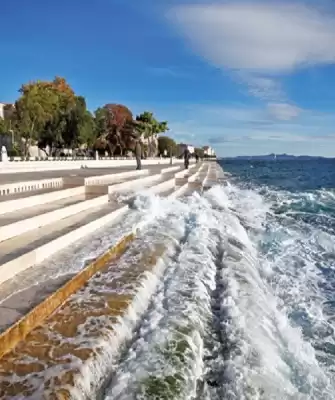
Sea Organ
Nikola Basic’s baby, the sea organ, is the most famous attraction in Zadar. 35 underwater pipes stretching across 70 meters, swallowing air from the waves, making the perfect sound, while you sit and watch the sunset over the sea.
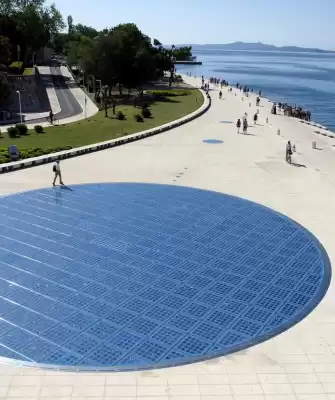
Greeting to the Sun
Three hundred multi layer solar panels shaped as a circle with 22 meter diameter changing colors and shapes randomly. This uber cool array of brightly colored lights is supposed to simulate communication with nature, presentation of all Solar System planets and their orbits.
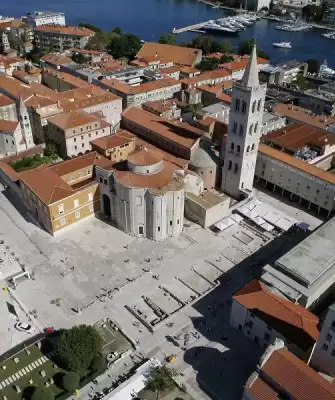
Roman Forum
Located in front of church of st. Donatus, the heart in Zadar, you can walk this square from the Roman era. It was build from 1st century BC to 3rd century AD and it’s size is 45 by 90 meters.
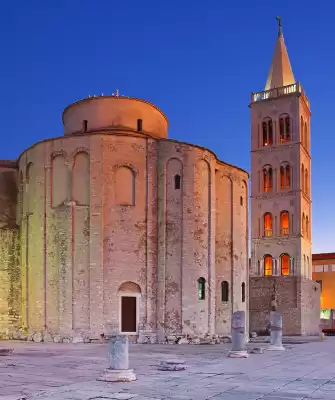
Church of St. Donatus
Speaking of old structures, this church is surely one of them. Dating from 9th century, this Byzantine style church is a perfect spot for the lovers of good, old architecture. The interior is really simple and includes two complete Roman columns, which are recycled from the Roman forum.
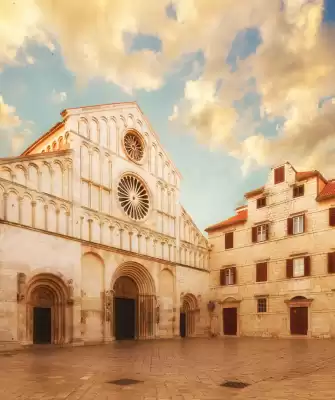
Cathedral of St. Anastasia
Another old historical church building, parts of it were constructed in the early years of 3rd century. Most of the travelers use it to see the mesmerizing view from its top, the bell tower.
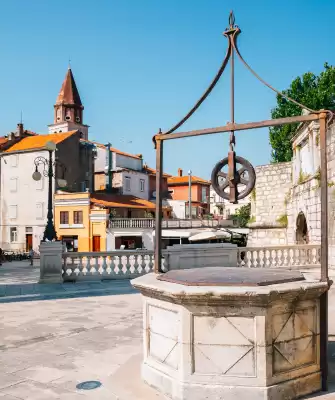
Five Wells Square
This square, built in 1574, has its name from the 5 wells that supplied Zadar with water. Five Wells Square is located between the medieval city walls and the Renaissance bastion Grimani.
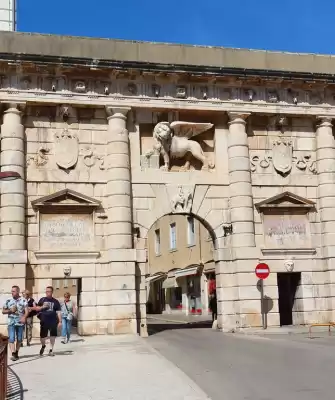
Land Gate
Most impressive of the gates is the Land Gate, main entrance into Zadar. It is built by Michele Sanmicheli in 1543 and it has a form of a triumphal arch with a central passage and two smaller two arches for wheeled traffic and pedestrians.
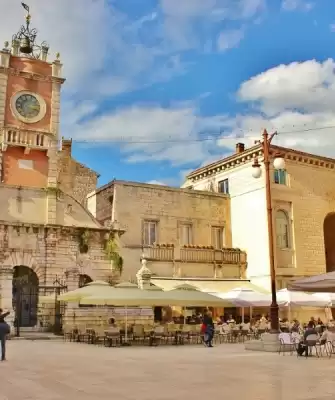
People's Square
Center of the public life in Zadar, usually used as a meeting point for every generation. It is a great place with many cafes’s, where you can relax and enjoy. On the northern side of this Square you can see the City Guard (large central clock tower) built from 1562 by Michele Sanmicheli.
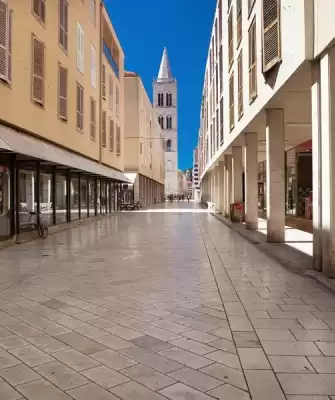
Kalelarga
The Wide Street, or Kalelarga is the most famous street in Zadar. It is really old, maybe older than the city itself, and it spread from People’s Square to the Forum. On this street you can enjoy in the many cafes, do some shopping, buy souvenirs and visit the local tourist agencies.
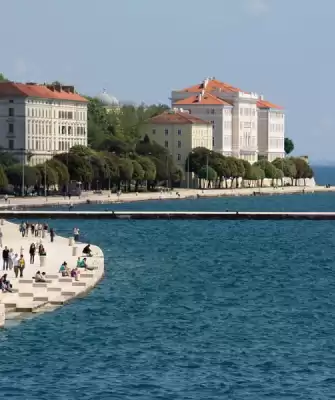
Riva
Since 1874, this promenade is a wonderful place to walk and enjoy the parks and palm trees. It has a beautiful view of the islands of Ugljan and Pašman and the Zadar channel. Also, Zadar is the only city where are allowed to swim in the center, on the promenade, so prepare your bikini and enjoy the perfect summer in Zadar.
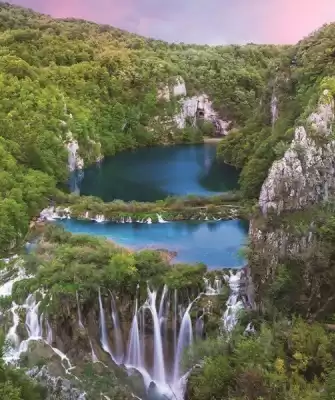
Plitvice Lakes National Park
Plitvice Lakes National park is a complex of 16 lakes of various sizes that pour one into another, divided by travertine barriers. The algae, mosses and plants create extraordinary palette coloring lakes in all different shades of green and blue.
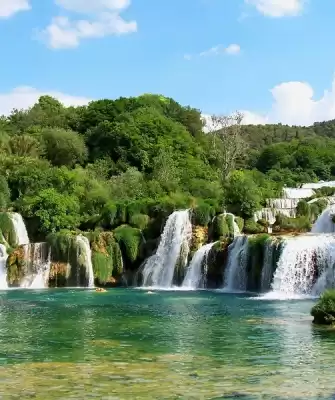
Krka Waterfalls National Park
Krka Waterfalls National park is a stunning collection of well preserved nature and historical sights. The river and waterfalls continually produce natural phenomena, such as travertine formations that are a slow process of calcium-carbonate sedimentation.
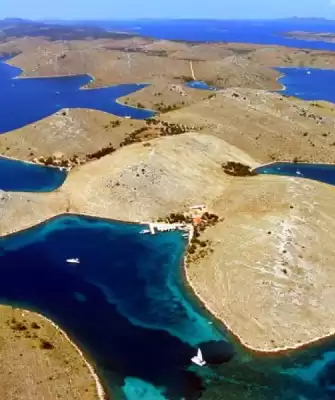
Kornati Islands National Park
Kornati Islands National park is one of the most indented archipelagos on the Mediterranean, a unique cluster of 150 islands, islets and cliffs spread over the central part of the Adriatic Sea. It is the bluest corner of the Adriatic.
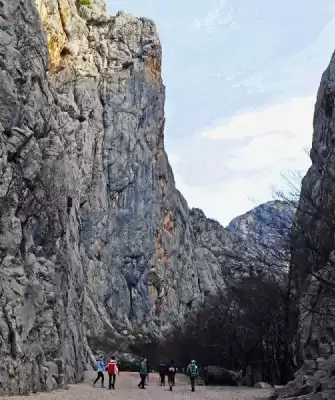
Paklenica Canyon National Park
Paklenica Canyon is a mountainous National park established in 1929, but for historical reasons it was disestablished and reestablished in 1949, only few months after Plitvice Lakes.
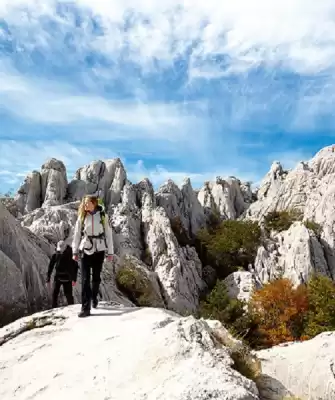
Northern Velebit National Park
Established in 1999, Northern Velebit is the youngest of eight national parks in Croatia. This part of the Velebit Mountain is a true patchwork of the most diverse habitats that are home to countless plant, fungus and animal species – a wealth that is yet to be explored in its entirety.




